Two DOE Virtual Public Meetings about Plans to Move Tons of Surplus Plutonium to WIPP
![]() The Department of Energy (DOE) will hold two four-hour virtual public meetings on Monday, January 25th and Tuesday, January 26th about its plans to dilute and dispose of up to 48.2 metric tons of radioactive surplus plutonium at the deep geologic Waste Isolation Pilot Plant (WIPP), located in southeastern New Mexico. DOE is seeking public comments about the scope of a new draft environment impact statement that will examine the DOE’s preferred alternative to dilute and dispose of the plutonium and any alternatives.
The Department of Energy (DOE) will hold two four-hour virtual public meetings on Monday, January 25th and Tuesday, January 26th about its plans to dilute and dispose of up to 48.2 metric tons of radioactive surplus plutonium at the deep geologic Waste Isolation Pilot Plant (WIPP), located in southeastern New Mexico. DOE is seeking public comments about the scope of a new draft environment impact statement that will examine the DOE’s preferred alternative to dilute and dispose of the plutonium and any alternatives.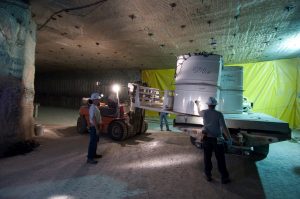 https://www.energy.gov/nepa/downloads/doeeis-0549-notice-intent For more information, check out the Action Alerts prepared by the Stop Forever WIPP Coalition, of which CCNS is a part. http://nuclearactive.org/doe-breaks-its-promises-to-new-mexico-part-i/ and http://nuclearactive.org/doe-breaks-its-promises-to-new-mexico-part-2/
https://www.energy.gov/nepa/downloads/doeeis-0549-notice-intent For more information, check out the Action Alerts prepared by the Stop Forever WIPP Coalition, of which CCNS is a part. http://nuclearactive.org/doe-breaks-its-promises-to-new-mexico-part-i/ and http://nuclearactive.org/doe-breaks-its-promises-to-new-mexico-part-2/
Scoping comments are due to DOE on or before Monday, February 1, 2021. You can make comments during the virtual meetings, or by phone, email, or U.S. Mail. The Stop Forever WIPP Coalition has prepared sample public comment letters you can use that are posted here: f one-pager Surplus Pu Scoping EIS comments 1-8-21 f long Surplus Pu Scoping EIS comments 1-8-21 A WIPP Timeline is also available here: WIPP-Timeline_Final
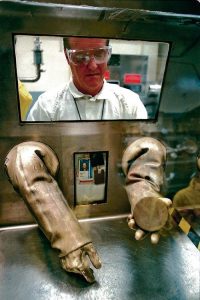 The Monday, January 25th public meeting will occur from 3 to 7 pm Mountain Standard Time. The Tuesday, January 26th meeting will occur from 5 to 9 pm Mountain Standard Time. You can participate by telephone, computer or other device. For connection information, links to the meeting presentation and fact sheets in both English and Spanish, and information about where to submit your comments, please visit https://www.energy.gov/nnsa/nnsa-nepa-reading-room, scroll down and click on Virtual Public Scoping Meetings for the Surplus Plutonium Disposition Program Environmental Impact Statement. As of this posting, the meeting presentation and fact sheets in English and Spanish are not available on the website….
The Monday, January 25th public meeting will occur from 3 to 7 pm Mountain Standard Time. The Tuesday, January 26th meeting will occur from 5 to 9 pm Mountain Standard Time. You can participate by telephone, computer or other device. For connection information, links to the meeting presentation and fact sheets in both English and Spanish, and information about where to submit your comments, please visit https://www.energy.gov/nnsa/nnsa-nepa-reading-room, scroll down and click on Virtual Public Scoping Meetings for the Surplus Plutonium Disposition Program Environmental Impact Statement. As of this posting, the meeting presentation and fact sheets in English and Spanish are not available on the website….
Surplus plutonium is found in the form of pits, or the triggers for nuclear weapons. Another source is non-pit plutonium. Both must be converted to plutonium oxide, which is then blended with an unknown adulterant called “stardust.” The oxidation work would be done at the Los Alamos National Laboratory (LANL). Conversion and blending is required for the plutonium to meet the waste acceptance criteria at WIPP.
Despite DOE’s plans, the National Academy of Sciences stated in a recent report that WIPP’s legal capacity can only hold waste long ago designated for disposal from DOE sites. Review of the Department of Energy’s Plans for Disposal of Surplus Plutonium in the Waste Isolation Pilot Plant at https://www.nap.edu/catalog/25593/review-of-the-department-of-energys-plans-for-disposal-of-surplus-plutonium-in-the-waste-isolation-pilot-plant
Over the last 25 years, several U.S. Presidents have designated more than 62 metric tons, or about 69 tons, of plutonium as surplus. 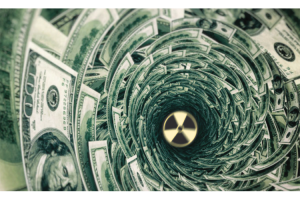 Previously, DOE has proposed immobilizing it for disposal in a geologic repository other than WIPP and fabricating it into fuel for nuclear power plants. Another option is to continue to store it at the Pantex Plant in Texas, or the Savannah River Site in South Carolina.
Previously, DOE has proposed immobilizing it for disposal in a geologic repository other than WIPP and fabricating it into fuel for nuclear power plants. Another option is to continue to store it at the Pantex Plant in Texas, or the Savannah River Site in South Carolina.
DOE has also proposed building new facilities at the Savannah River Site, including a plutonium pit disassembly and conversion facility; a mixed-oxide fuel fabrication facility; and a waste solidification building. Billions of taxpayer dollars have been spent, but none of those facilities is in operation.
Did You Know about these COVID-safe  (wear a mask), socially distant, peaceful and non-violent vigils to Celebrate the Entry into Force of the Nuclear Weapons Ban Treaty on Friday, January 22nd?
(wear a mask), socially distant, peaceful and non-violent vigils to Celebrate the Entry into Force of the Nuclear Weapons Ban Treaty on Friday, January 22nd?
- In Albuquerque, from 11 am to 1 pm MST,
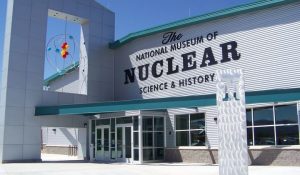 across the street from the National Museum of Nuclear Science and History in the empty lot on Eubank Blvd. SE between La Entrada and Southern Blvd. SE. Organized by the Nuclear Issues Study Group (NISG). For more information and to view the livestreaming for those who cannot attend in person, please visit https://www.facebook.com/events/108487254449335
across the street from the National Museum of Nuclear Science and History in the empty lot on Eubank Blvd. SE between La Entrada and Southern Blvd. SE. Organized by the Nuclear Issues Study Group (NISG). For more information and to view the livestreaming for those who cannot attend in person, please visit https://www.facebook.com/events/108487254449335
- In Santa Fe, from noon to 1 pm MST:
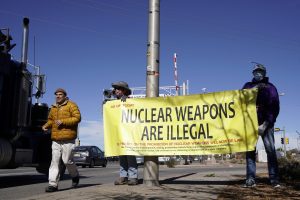 CCNS, with Veterans for Peace and others, will vigil with our banners declaring that nuclear weapons are now illegal on the corner of St. Francis Drive and Cerrillos Road.
CCNS, with Veterans for Peace and others, will vigil with our banners declaring that nuclear weapons are now illegal on the corner of St. Francis Drive and Cerrillos Road.
- In Los Alamos at Ashley Pond, from 2 to 3 pm MST:
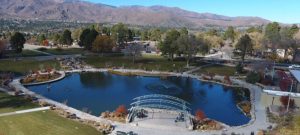 CCNS, with Veterans for Peace and others, will vigil with our banners declaring that nuclear weapons are now illegal.
CCNS, with Veterans for Peace and others, will vigil with our banners declaring that nuclear weapons are now illegal.
- International Campaign to Abolish Nuclear Weapons (ICAN)
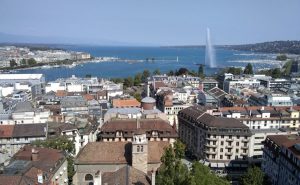 virtual celebration event at 8 pm MST. ICAN will go live from Geneva at 8:00 pm MST/ 21:00 CET Friday 22 January. Please invite all your friends, colleagues, and networks to sign up here: https://www.icanw.org/studio_2221
virtual celebration event at 8 pm MST. ICAN will go live from Geneva at 8:00 pm MST/ 21:00 CET Friday 22 January. Please invite all your friends, colleagues, and networks to sign up here: https://www.icanw.org/studio_2221
Please plan to join us in the celebrations that so many of us have been working for decades to achieve! CCNS is grateful for each and every one of you!!!
The Treaty on the Prohibition of Nuclear Weapons (TPNW or Nuclear Ban Treaty) enters into force in its 50 ratifying countries on 1/22/21. This is happy news, but what does this mean, exactly? What can we do to help eliminate nuclear weapons before they eliminate us? (This is the second edition of this short video. It has been edited for even greater clarity and accuracy — which made it a bit longer. Now 2 minutes) https://www.youtube.com/watch?v=Px-4RsKGE_A&feature=youtu.be
Did You Know about these Treaty Resources?
And here’s a list of other resources, opportunities to sign-on statements, and livestream events: 
- Oak Ridge Environmental Peace Alliance https://orepa.org/nuclear-ban-treaty-entry-into-force-resources/
- Nukewatch (Wisconsin) https://nukewatchinfo.org/long-sought-anti-war-landmark-treaty-prohibiting-nuclear-weapons-becomes-law/
- Nuclear Resister http://www.nukeresister.org/
- International Campaign to Abolish Nuclear Weapons https://www.icanw.org/
- Peace Boat and Other Japanese NGOs – Jan. 21 – 23 livestreamed events, including a press conference, broadcasts and presentations at https://peaceboat.org/english/news/celebrating-entry-into-force-day
- Nuclear Free Schools Statement on Capitol Riots and U.S. Nuclear Launch Authority https://www.nuclearfreeschools.com/post/statement-on-capitol-riots-and-us-nuclear-launch-authority
- PeaceWorks Kansas City Treaty billboards at http://peaceworkskc.org/
Tags: Department of Energy, dilute and dispose, draft environmental impact statement, LANL, Los Alamos National Laboratory, National Academy of Sciences, Pantex Plant, plutonium oxide, Savannah River Site, scoping, Stop Forever WIPP Coalition, surplus plutonium, Waste Isolation Pilot Plant, WIPP, WIPP’s capacity, “stardust, ” conversion and blending


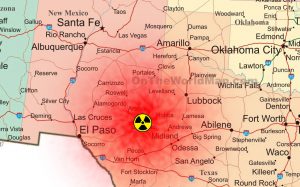













Comments
No comments so far.